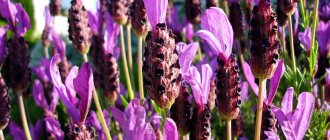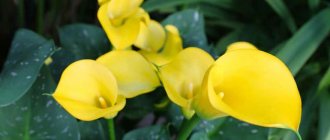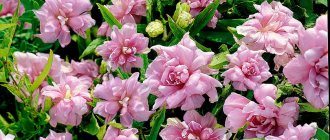Clematis is one of the most beautiful climbing plants. It owes its undeniable charm to its beautiful shape and interesting appearance of delicate flowers. These plants have gorgeous hues and a delightful profusion of flowers. With proper care, timely pruning, properly prepared position and supports, we can get a magnificent, profusely flowering vine that will decorate the yard for ten years. We will tell you how to grow clematis - planting and care in open ground, how to prune it correctly.
A few words about the plant
Clematis is a unique plant that is perfect for growing in our climate. Other names for vines are clematis, princes. The Clematis species includes many varieties. These are perennials that amaze with the charm and extraordinary delicacy of their magnificent flowers. Most often the plant can be found in gardens, but it grows well in nature.
Clematis often have large, beautifully colored flowers. Sometimes the diameter of the flower reaches 20-25 cm, the petals can be simple or double. The color range is very wide: in our climatic conditions, white, pink, purple, and red flowers are more common.
Clematis in a flowerbed. What to plant “in pair” with clematis?
It is believed that the “legs” of clematis should be in the shade, and the “head” in the sun, but the point is not in the shade, but in the fact that the soil at the base of the bush should not overheat. Mulching or planting perennial or annual flowers will help you solve this problem. You can plant annual marigolds, calendula or perennial phlox, irises, daylilies and peonies at the “legs” of clematis.
Popular types and varieties
Clematis includes more than 300 valuable noble varieties, which differ in color and shape of flowers. New varieties continue to be developed to increase plant resistance to frost, adapt them to growing in containers, or try to create varieties that can replace ornamental shrubs.
Depending on the variety, you can grow species with large or small flowers, which grow well in the southern and northern parts of the garden. Varieties differ in appearance, vigor, flowering period and frost resistance. When growing clematis, it is worth considering that large-flowered varieties are much more sensitive and demanding than perennial and botanical varieties.
Large-flowered
The most popular in our gardens are large-flowered clematis. Their flowers are the most attractive - large, reaching 15 cm in diameter. They are magnificent and last a long time on the plant. Multi-flowered clematis often bloom twice and can decorate the garden all season long:
- flowers appear for the first time in May–June;
- then they repeat flowering on the shoots of the current year until autumn.
Among the easiest to grow large-flowered clematis are the following varieties:
- "Comtesse de Bouchau";
- "Gipsy Queen"
- "Hagley Hybrid";
- "Huldine";
- "Jackmanii";
- "Ramona"
- "The President".
Clematis varieties are described in more detail in the following article -
Grape leaf
Noteworthy is the climbing clematis or clematis (Clematis vitalba), characterized by strong growth. The shoots reach a length of 10 meters in a short time. It is often planted in containers on the balcony. This is one of the most attractive climbing plants available for cultivation in our climate. The liana forms small flowers that densely cover the plant. There are really a lot of flowers, usually they are white.
Nowadays varieties with increased frost resistance are being developed, because previously these perennials often froze in severe winters. The most valuable variety of clematis with high frost resistance and magnificent, delightful lush flowers - “Summer Snow” Summer Snow has white, relatively large flowers.
Tangut
Interesting is the Tangut clematis (Clematis tangutica), characterized by drooping single yellow flowers appearing on thin stems. Tangut clematis has the advantage that its fruits are very decorative - fluffy and silky.
Notable varieties are “Anita” and “Bill McKenzie”, growing up to 6 meters in length. Tangut clematis is also available in varieties with intense orange flowers.
Alpine
Alpine clematis is excellent for growing in our gardens. These garden flowers are especially valued for their resistance to adverse weather conditions. They are great for any garden; you can even plant them in areas where cold winds often blow. Alpine clematis is suitable for cooler regions of the country, so it is very popular. The species is distinguished by bell-shaped flowers hanging from long peduncles, taking on beautiful, intense colors.
Alpine clematis has colorful varieties that are great for growing. It is even more frost-resistant than grape-leaved and grows well anywhere. Intense red or burgundy varieties are popular. Violet and blue shades are interesting - these are relatively rare flower colors, so it is worth making such a contrasting accent in the garden. The most popular varieties of alpine clematis include:
- "Blue Bird" Blue Bird;
- "Cecile" Cecile;
- "Frankie" Frankie.
Straight
In gardens you can find straight clematis, which also grows in wild form in our country. This is a small-flowered clematis with a stunning scent. The flowers are quite small, but numerous, so they do not lose their attractiveness. They look great in the garden; ornamental shrubs are good company for them.
Manchurian
Manchurian clematis (Clematis mandschurica) is unpretentious in care. This is an extremely undemanding plant that blooms beautifully almost all season. This is a vine reaching a height of 2 meters. The distinctive features of the species are small white flowers, reaching a maximum diameter of 2 cm. Their shape resembles scattered stars. Flowering period: July-September. An additional advantage of the plant is its wonderful aroma. White flowers look interesting against the background of green leaves. After the flowering period, characteristic fruits appear in place of the flowers, consisting of tiny hairs that form small “doughnuts”.
Classification of clematis
The main criterion for dividing into species is the closest relative on the mother’s side:
The "Jacman" species is a vine 3-4 meters long, with a strong and developed root. Its flowers are blue, violet or purple, odorless, up to 20 centimeters in diameter. On branches they can be located in small groups of 3-4 pieces or grow one at a time.
Type "Florida" - the length of their vines reaches up to 3 meters. It blooms in late spring early summer, with light flowers approximately 12 centimeters in diameter.
The Viticella species is about 3 meters long, with flowers in red shades such as pink, crimson and purple. They are approximately 12 centimeters in diameter. This species is distinguished by the rich splendor of flowering.
The species “Lanuginosa” is not too long, up to 2.5 meters, with large blue or white flowers. At the end of spring, hundreds of inflorescences appear on the bushes; by mid-summer, another flowering is possible, but more rare.
View "Patens" - blooms twice, the first in spring. Its flowers are quite unusual, star-shaped, up to 15 centimeters in diameter. The colors are amazing, from light to dark purple.
The “Integrifolia” species is more like a bush up to 1.5 meters high. Blooms in mid-summer in a variety of colors.
The species "Small-flowered" - so called for their small flowers, reaching only 4 centimeters in diameter. It begins to bloom earlier than all other species.
Of course, there are many more types and varieties of clematis and only narrow specialists in floriculture know them all.
Landing
Choosing the soil, position
Multi-flowered clematis, often found in our gardens, have fairly low soil requirements. Requirements for the planting site and soil may vary greatly for other species. The straight and alpine clematis have small requirements for soils; a little more attention needs to be paid to the grape-leaved species.
In general, clematis needs soil:
- fertile;
- humus;
- slightly damp but not swampy;
- it is desirable that it has a neutral or slightly alkaline reaction (pH from 6 to 7).
Clematis, regardless of the type, should grow in such a place that its lower part is shaded and protected, and the upper part is illuminated. Some varieties respond better to shade, others less well, but this is the general trend. The more flowers a variety produces, the greater its demand for sunshine.
The best places in the garden for clematis are in eastern or western exposures, although some varieties grow well in northern exposures. These perennials tolerate shade better than too much sunlight. Intensely colored species grow well on the southern side, and with flowers of a softer shade on the northern side.
The climbing shoots of clematis require appropriate support. It can be:
- a net thrown on the wall;
- railings and balustrades;
- stairs on the balcony;
- Since clematis tolerates shade well, it can be planted under trees, with their trunks or ornamental shrubs as support. This combination is an amazing sight.
When and how to plant?
Clematis prefers fertile, light soil rich in minerals. This can be ensured by properly fertilizing the soil before planting the plants in the garden. Therefore, before planting, it is worth adding an appropriate fertilizer to the substrate, optimally a multi-component one, which will also protect the plants from diseases. Natural compost can be used to fertilize and improve the soil structure.
Clematis seedlings are sold in containers and theoretically can be planted in the ground from spring to autumn. Clematis are often planted in the spring.
Experience shows that the best time to plant clematis in open ground is the end of summer (August, September), when the ground has a temperature of 14-22 °C. Seedlings are planted in a hole with a diameter 2 times larger than the diameter of the root ball.
Success in growing clematis is largely determined by the soil. The soil should be fertile, permeable, with a high content of humus. If the soil is heavy, for example loamy, you need to make drainage - you need to dig a hole 80 cm deep and 60 cm in diameter. A 20 cm layer of coarse gravel or crushed stone is placed at the bottom, and a 20 cm layer of well-rotted compost is placed on top of it. When planting clematis, such natural fertilizer will give it strength to grow and a supply of nutrients for several years.
After placing the plants in the hole, cover them with garden soil mixed half and half with compost. The seedlings are placed in a hole a few centimeters deeper than they grew in the pot. The sprinkled shoots will send out roots, which will strengthen the plant.
For growing on balconies and terraces, we can recommend dwarf varieties of clematis with a long flowering period.
We plant container clematis in the spring. The container must have a capacity of at least 20 liters. For growing, use high-quality soil for flowers. Pots must be equipped with a drainage hole and support for shoots. Most clematis can overwinter in pots without shelter.
An important aspect when growing clematis is the level of soil moisture. The plant prefers not too moist soils. Therefore, it needs to be planted in a well-drained place. Clematis exhibit a fairly high sensitivity to drought, but drying out the soil too quickly is also not the best option.
Aesthetic selection criteria
Now let's look at the same problem, but from an aesthetic point of view. So, why do we grow clematis in our garden plots? That's right, so that they bloom and thereby decorate our summer cottage space. That is, it is important for us that the flowering of clematis lasts long enough - as much as possible. But here’s the problem: the longer clematis flowers are exposed to direct sunlight, the faster they fade and lose their natural beauty.
This does not mean that clematis needs shade for long-term flowering. This only confirms the fact that excessive exposure to the sun will negatively affect the plant, so sunlight, without which clematis is not ready to bloom, must be dosed. We indicated the exact dose above.
In addition, you should remember to play with contrast if you plan to plant clematis near a fence or wall of the house. A bush that blooms white is unlikely to be able to stand out against a white wall (not counting its green mass, of course). But the “Ville de Lyon” variety, which will pamper you with carmine-red inflorescences, will look simply gorgeous against the background of white brick. The same can be said about the “Multi Blue” variety, which differs from its counterparts in having deep blue flowers.
Growing and caring for the garden
Clematis is not particularly capricious; caring for it does not create any particular difficulties.
Watering
The most important aspect of care is regular watering, especially during hot summers or long periods of drought.
Lack of water during growth is dangerous for clematis. Overdried plants grow poorly, get sick more often (including powdery mildew, wilt), and tolerate frost worse. Therefore, from spring to autumn they should be systematically watered so that the soil is constantly slightly moist.
Plants can be watered while watering the entire garden and do not require any specific type of water. To maintain adequate soil moisture, mulch, such as bark, can be spread around plants to help retain water longer. This is the best way to provide your clematis with optimal water conditions. The bark will reduce the evaporation of moisture from the soil and protect it from overheating. This is very important because princelings, although they love the sun, do not grow well in hot places. Instead of bark, low perennials can be planted around the bushes to shade the soil.
Supports
For clematis, it is worth preparing suitable supports on which they can climb. Supports with small diameter holes are better suited - wooden gratings, wire mesh. Clematis easily grows over arbors, poles, neighboring shrubs, and trees.
Clematis supports can be made from various materials, depending on the growth vigor of the particular variety. These are lightweight vines, so they can be carried over structures made of light, low-strength materials, for example, using wicker or bamboo fences. Often metal and wood are used to construct supports. If the stand is to be fixed to the wall, you should remember to maintain a 10cm distance (between the support and the wall) to allow the plants to breathe.
Feeding
Clematis does not need to be fertilized during watering. If compost or multi-component fertilizer was applied during planting, the plants already have mineral components in abundance. Old clematis bushes in the garden need to be fed before the growing season begins. In the spring, nitrogen fertilizers are applied to increase the growth and density of the vine.
Clematis are fed with mineral compounds during flowering. During this period, fertilizers with a high phosphorus content are applied to clematis; this element has a better effect on the appearance of the flowers.
Wintering
Clematis may seem like a tender plant, but they are hardy enough to grow almost anywhere in the country. They can also be grown in regions where winters are cold, you just need to choose the right varieties and provide the right growing conditions.
An important aspect of growing clematis in the garden is protecting the plants from frost. These perennials shed their leaves in the winter and quickly re-emerge in the spring. However, some species may exhibit less frost resistance. In cooler areas, cover plants in the fall with a mound of soil or bark or cover their bases with dry leaves to keep the roots and buds from freezing during harsh winters.
When planting and caring for clematis in Siberia and the Urals, it is important to choose frost-resistant varieties and cover the young plants very carefully, pouring a bucket of soil onto each bush. Frost-resistant adult varieties winter well in Siberia, even in areas where there is less than 30 cm of snow in winter.
In Siberia and the Urals, many varieties of clematis winter well, for example: Ball of Flowers, Rouge Cardinal, Zhakmani, A. Anisimova, Snow White, Olga Hybrid, Ville de Lyon, Yubileiny - 70, Luther Burbank, Nadezhda, Skazka and others.
Especially multi-flowered clematis need to be protected from the cold and especially from frosty winds, which can damage the shoots. Clematis can be protected from frost with agrofibre or covered with bags of this material. Agrofibre perfectly allows air to pass through, does not cause accumulation of moisture inside, and is an excellent protection against wind and snow.
Trimming
Pruning clematis usually causes most doubts and concerns. We will show you how to prune clematis correctly so that the plants bush and bloom better.
There are several hundred varieties in the clematis family. Some of them bloom in early spring, others in summer. Some produce buds on old shoots, others on young shoots. Therefore, pruning clematis depends on the flowering period; breeders have identified 3 groups of clematis, divided by pruning methods:
- a group that is pruned after flowering;
- delicate (for varieties blooming in May-June);
- radical (for late-flowering varieties).
Common to all clematis is the first pruning a year after planting to a height of 30-40 cm to ensure stronger tillering. Dry, dead shoots are also cut off annually.
After flowering
This group includes botanical clematis that bloom in early spring on old shoots that have set buds before winter, for example, Clematis Montana, Atragene, Armandia. They are not pruned at all or only when they grow excessively. Pruning is carried out immediately after flowering at a height of 1 meter or half the length of the blossoming shoots is removed. This will stimulate the plant to develop shoots in the lower parts and become well compacted.
A good method is to prune in steps, from a narrower layer at the top to a wide base.
Delicate
This type of pruning is used on large-flowered clematis, which begin flowering in May-June on last year's shoots. They are pruned every year at a height of 70-150 cm, just above a pair of buds. You can prune in late fall or very early spring before the plant begins to grow. Weaker plants can be pruned more heavily. Stems that grow too close to each other are also trimmed. No pruning at all will result in the plant blooming poorly and producing smaller flowers. This group includes:
- early flowering variety Beautiful Bridge;
- compact Multi Blue, Liberation;
- Terry Vyvyan Pennell.
Radical
Recommended for late-blooming varieties whose flowers bloom in June-July. Species of this group are pruned in November-December or early spring, before growth begins, at a height of 20-40 cm from the ground, as they form flowers on this year's growths. The oldest shoots are cut back to ground level to encourage the growth of new stems and increase the plant's stability. Pruning encourages flowers to set next season. Unpruned bushes look unsightly and slowly stop blooming. Groups of varieties – Viticella, Texensis.
If it is difficult to determine what type of clematis is growing in the garden, you can start keeping a diary, recording the time of flowering of the plant, the date of the second flowering. This makes further work on caring for clematis easier in the following months.
Growing in a pot
Clematis grows well in containers and pots. This is a great way to better protect them from the cold. Growing in pots is not particularly difficult. Clematis in pots will be slightly smaller than those growing in the ground. It will not be able to create a large root system, but in containers it is easier to provide proper water conditions and apply the necessary dose of fertilizer. Plants need large pots - optimally more than 30 cm in diameter and 40 cm in height. At the bottom of the pot you need to pour drainage, for example, a little expanded clay, so that the roots of the plant do not stand in water.
In a pot, clematis can grow in standard garden soil and does not require special care. Care is the same as in the ground. Similar fertilizers are used, and the pruning procedure is similar.
The only thing that changes is protection from frost. Clematis roots in a pot may freeze, especially if the winter is harsh. True, shoots in a pot on the balcony are better protected from the wind, but the greatest danger is the freezing of the plant. To prevent this, it is worth inserting the pots into a cardboard box and insulating the bottom from the cold floor, for example, using a thick piece of foam. It is good to move the pots to a covered loggia or balcony. It is worth considering the possibility of wintering in the house, in a cool room. The optimal temperature for wintering clematis is in the range from 0 to 5 degrees Celsius.
Diseases
Clematis rarely get sick, but they can get sick if they are not given the proper growing conditions. The most common diseases:
- wilting, manifested by brown spots on the stems;
- powdery mildew, which appears as white coatings on the leaves.
To eliminate these diseases, it is worth using antifungal drugs such as Bayleton and Topaz immediately after the first symptoms are detected.
Clematis on a support: decorating screens, pergolas and trellises
Most often, clematis are placed on pergolas, trellises, arches or screens. Before planting clematis, install supports 1.5–2 m high. The support must be quite reliable; it can be made of either metal or wood, the main thing is that it provides support for the shoots. Such supports can be placed anywhere in the garden by planting one or several different varieties of clematis near them. When planting, it is better to use clematis from the same pruning group to make caring for them easier.
Reproduction
Clematis does not have great growing requirements. Therefore, novice gardeners can successfully cope with it. However, propagation by seeds sometimes causes difficulties because the seeds of this plant take a long time to germinate.
Seeds
Planting clematis seeds is carried out in spring or autumn. Self-collected seeds during sowing may not repeat the species characteristics of the mother plant. Self-seeding occurs easily, the seeds undergo stratification in the soil and then germinate well. Tangut clematis sows well from seeds.
Attention! Clematis seeds require stratification (cooling) for better germination.
According to gardeners, clematis do not germinate well. When sowing clematis, you should arm yourself with patience. Flower growers recommend soaking the seeds for 5-10 days before sowing, changing the water.
Approximate timing of sowing and germination by type:
- Clematis Tangut (stratification is required for 2 months), whole-leaved (intergifolia), grape-leaved, hogweed - germination takes several weeks.
- Large-flowered clematis take even longer to germinate.
- Grape leaves germinate for about a month. Stratification is required for 2 months.
- Manchurian clematis germinates in 2-3 months.
- Straight seeds are soaked for a week, sown and placed in the refrigerator for 2 months. Seedlings appear after 2-4 months.
- Alpine, short-tailed are sown in autumn, seedlings emerge very weakly in April.
The soil for clematis seedlings is made up of peat and sand in half. After emergence, the seedlings are planted in separate pots for growing at home in a room, the preferred temperature is + 15+16 degrees.
Method for rapid germination of large-flowered clematis - step by step:
- Disinfection and soaking. Clematis seeds for seedlings are soaked in a slightly pink solution of potassium permanganate for a minute, then washed with tap water. Wet seeds are placed in non-sealed bags and stored in the refrigerator for 1 month. Every week they check to see if they are moldy. If suspicions arise, wash again in potassium permanganate and then in water. After a month, check whether the seed shell has softened.
- Removing the “tail” and seed cover. Very carefully remove the seed cover completely or half. Removal of the tail is necessary, since its presence has an inhibitory effect.
- Back in the refrigerator. We rinse the tiny “nuts” in a slightly pink solution of potassium permanganate and then in water. Place in vermiculite and refrigerate for 2 months.
- At the end of February, take the seeds out of the refrigerator and place them in a closed plastic transparent box on a sunny windowsill. It is important that at this stage there is warmth and enough sunlight. We air the box every day for at least 30 minutes. The seeds, after 2-4 weeks on the windowsill, begin to germinate and can be planted in pots.
Photo. Growing clematis from seeds
Cuttings, layering
Propagation by cuttings is not problematic. To do this, cuttings are cut from shoots, which take root very easily.
Clematis is best propagated by layering; to do this, we bend one shoot to the surface of the soil and cover it with a small amount of soil. Such seedlings take root on their own, usually within 1-2 years. After this time, we cut the seedlings from the mother plant and dig them up along with a lump of earth. All that remains is to plant it in a pre-selected and specially prepared place.
Friends and neighbors of clematis
When growing clematis, its roots need to be shaded; plants and flowers with shallow roots will help with this. For example, marigolds or calendula. Phloxes, astilbes, irises and geraniums will also look good nearby.
Creepers will also be combined with flowers that bloom like them, for example, hydrangea or buddleia. Grape-leaved or burning clematis will make friends with fragrant acacia and barberry. Mock orange and viburnum, jasmine and lilies, coniferous shrubs and grapes, ivy and peonies can also become a neighbor to a lush vine.
Use in the garden
Clematis, blooming from about July to September, looks great on all kinds of supports, gazebos, pergolas, poles, and fences. The liana can also climb other types of plants - trees, deciduous and coniferous shrubs. Clematis can also be used as a ground cover plant. Then it mixes interestingly between trees and shrubs.
Clematis on a balcony or terrace is a great idea. They form a dense plexus and perfectly cover the railings, becoming a natural fence from neighbors or a screen. The magnificent flowers of all colors will take your breath away, especially when there are many of them.
Compatibility with other plants and interior items
Clematis (photo with a combination of flowers in a flower bed) looks perfect against a background of contrasting flowers.
You can combine a flower as your imagination allows, but most often gardeners combine a plant with:
- Lilac, rosehip, jasmine or climbing rose bushes. Low-growing shrubs are planted next to tall plants, which complement each other and do not obscure the sun's rays. For example, the combination of a flower with a rose will never leave the garden without an enviable bloom, since roses will be replaced by sophisticated clematis.
- Tall shrubs are used for landscaping arches, pergolas, and various canopies. Clematis on an arch, the photo of which allows you to imagine what the garden will look like in the future, needs reliable support. The development of the plant and the creation of a perfect species depend on its quality. Professionals recommend purchasing ready-made pergolas for clematis, photos of which can be seen in the garden center, or making similar supports yourself.
- Herbaceous varieties are used to decorate the lawn. An amazing blooming cloud, located against a backdrop of lush greenery, looks especially sophisticated and gentle.
Beautiful supports for clematis help transform the plant and make it individual. They are made of metal. Forged items densely woven with flowers look especially noble. But the simplest solution is a net for clematis (photo shown as an example).
Clematis goes well with the following groups of plants:
- Coniferous trees and shrubs.
- Pear, acacia.
- Elderberry, scumpia.
Advice ! When making a combination, professionals recommend studying the flowering time of all plants, maintenance conditions and color palette.
Some varieties of clematis do not overwinter well. They are used to create mixborders - flower beds in pots. Flowers simply look gorgeous on a “pedestal”, and during the cold season they are brought indoors to “sleep”.
Joint planting: clematis and roses
Classic partners of clematis are roses. For planting with roses, groups such as the large-flowered late-flowering Jacquemman hybrids, the Viticella group and the low-growing Integrifolia group are suitable. For an arch, paired with climbing roses, it is better to choose varieties of the Jacquemman or Vititsella group, and for bush roses, clematis of the integrifolia group would be an ideal partner. Roses and clematis can be chosen to match, or they can be diversified with contrasting combinations, for example, orange and purple.
Tips and tricks
Immediately after planting, the plant should be shaded and the bushes should be protected from gusts of wind. When watering, you should carefully monitor the volume of irrigation and do not flood the planted plants. In addition, clematis plantings should be regularly weeded and carefully but gently loosened. It is not recommended to feed plants with fertilizers immediately after planting.
By following the basic requirements for caring for clematis, you can get beautiful flowers in your summer cottage. The correct choice of varieties for planting and proper arrangement of plants will ensure that the local area has an attractive appearance for many months.
Features of cultivation
There are several options for planting a plant. It should be remembered that some varieties and species cannot be propagated by seeds. For example, Jacquemin's clematis does not propagate by seed material, which is due to the resulting plant being obtained, with all its characteristics not reminiscent of any of the parent plants.
When sowing in spring, stratified seeds are used. They should be mixed with moistened sand and then kept at temperatures of +5 degrees. Sowing is carried out in early May.
When planting in autumn, seeds should not be stratified.
Features of care
The main care of the plant consists of weeding, loosening, watering, and also tying the plant's vines to the supports. To protect clematis from drying out and soil overheating, in the spring you should mulch with humus or peat.
Another life-saving procedure that protects spring-planted plants from overheating is “tapping” the planting with flyers, which can effectively cover the bottom of the shoots. To shape the plant in the required direction for growth, in the spring you should tie it up and place the shoots on a support.
The only clematis variety that does not twine around supports is Integrifolia. This plant is tied up as it grows. Before sheltering for the winter, clematis should be pruned, first clearing of old foliage.
Young plants require especially careful care. It is very important to feed them with small doses of fertilizer twice a month. In early spring, you can sprinkle wood ash and manure mixed with potassium-phosphorus fertilizers under the plants.
We recommend that you read the article about the best varieties of clematis for growing in Russia.
Clematis as a ground cover plant
Often a piece of land itself requires decoration and complete covering. Clematis helps here too. The plant itself will trail along the ground if it is not attached to a support, but there are also certain varieties adapted for this.
For successful flowering, you can dig metal arcs into the ground at a low height, along which new shoots will grow. For this purpose, alpine, purple, Tangut and grape-leaved clematis are often planted.
Flowers come in various shapes, colors and fluffiness, creating a beautiful “carpet” in your garden.
Be careful not to accidentally step on or mow down the fragile flower. Children and pets can also damage the plant.
General characteristics of culture
Clematis, clematis, or vine (lat. Clematis) is a climbing plant with openwork leaves and bright flowers from the genus of the buttercup family (lat. Ranunculaceae). The cultivation of these plants began in Europe in the 16th century.
The first to be introduced was the blue clematis Viticella. The plant was a success among collectors and it began to be imported en masse from America and Asia. Today, about 300 species are known in botany, growing everywhere. In nature, clematis are found on river banks, in steppes, and on rocky outcrops.
Clematis Viticella - Blue Angel variety
The root system of a crop can be of two types depending on the variety: fibrous and taproot. Clematis with rhizomes of the second type do not respond well to transplantation, so they should be planted immediately in a permanent place. The plant produces thin shoots that develop in spring from dormant buds. The leaves are usually paired; in addition to the green color, there are varieties with purple leaves.
The flowers are solitary or collected in inflorescences of different shapes. The petals can be painted in various colors: from soft blue and pink to red and rich blue. Clematis blooms for 2-3 weeks, and if you choose the right early and late varieties, you can provide all-season flowering in the garden. Late clematis are not afraid of short-term drops in temperature; they bloom only after the onset of stable frosts.











